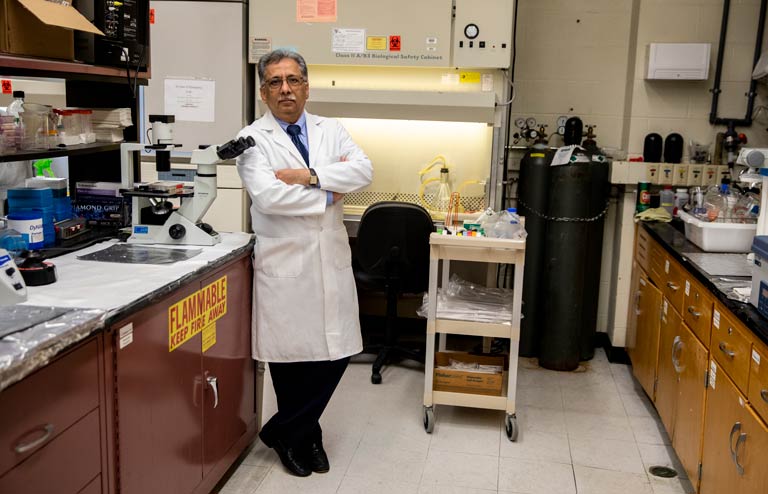Stopping triple-negative breast cancer in its tracks
Stopping triple-negative breast cancer in its tracks
By Salman Hyder
In recent years, much has been made of drug-resistant bacterial infections such as MRSA, which have adapted to confound every attempt to banish them from patients’ bodies. This attention is much deserved — antibiotics were the “keys” that unlocked the mystery of how to defeat the vast array of bacterial assaults that had plagued mankind for untold centuries. Without these keys, doctors are sometimes alarmingly ill-equipped to deal with infections.

Now imagine, if you will, that not only are doctors deprived of these keys, but they aren’t even sure what they need to unlock. Imagine the enemy is not infection, but cancer, and the longer it goes untreated, the more it spreads, metastasizing throughout the body. This is triple-negative breast cancer (TNBC), an aggressive form of the disease that accounts for 15-20% of all breast cancer diagnoses.
To treat breast cancer, doctors need to identify the receptors that are fueling its growth and spread. These receptors — most commonly estrogen, progesterone, and a gene known as human epidermal growth factor receptor 2 — can then be targeted to kill the cancer. In other words, for the majority of cancers, doctors are dealing with one of three locks that needs opening, and the key — drugs or hormone therapy — has already been identified.
Not so with TNBC, which derives its name from testing negative for all three of these receptors. Without these receptors, doctors have no target. Without a target, determining the best course of treatment is a daunting task. It sounds like a sadistic riddle: How do you unlock a door that has no lock and no key? And worse, since TNBC aggressively metastasizes, inaction or ineffective treatment is a golden opportunity for it to spread to the lungs or other organs, greatly increasing the risk of death. Not to mention the fact that in the absence of traditional treatments, toxic and non-specific drugs are administered.
But the tide could be turning. My team at the University of Missouri recently investigated a promising lead: p53, a gene that normally acts as a tumor suppressor, can mutate and result in unrestrained, drug-resistant tumors due to the presence of an inactive protein. By restoring the original function of this gene, we hoped to create an avenue through which to prevent metastasis, crippling TNBC’s most dangerous weapon.
To that end, mice with aggressive TNBC were treated with two molecules: APR-246, which has been shown to restore the tumor-fighting function of the mutant p53 protein, and 2aG4, which disrupts blood vessels in tumors. The results were astounding; while both molecules reduced metastatic colonies when administered alone, a combination treatment resulted in a 50% reduction in metastasis.
This dramatic reduction in TNBC’s ability to spread into other organs signals the potential for a powerful tool to both prevent and counteract the spread of cancer. It is difficult to overstate the importance of such a tool. TNBC is at its deadliest — by far — when it spreads to other organs in the body, and so shutting down this function is an important step toward ridding humans of the disease once and for all.
The power of precision medicine
APR-246 and 2aG4 are currently undergoing clinical trials, which will tell us with certainty whether the results we’ve observed can be applied to people. Regardless, it is clear that we are entering a new era in the fight against cancer, one in which the challenges of drug-resistant diseases are being met by doctors and researchers who are innovating their own solutions and personalizing care to the needs of individuals.
This is precision health — innovative medical research that is translatable to treatments and technology and can be refined to the specific needs of individual patients. Our study is just one example of this kind of medicine, in which we specifically targeted a mutant protein in the p53 gene that is only present in certain cancer cells.
At MU through the NextGen Precision Health Initiative, researchers are working to defuse the threats posed by diseases like breast cancer, and they are using collaborative, precision medicine to tailor treatments that can be translated into new drugs, devices and treatments that deliver customized patient care based on an individual’s genes, environment and lifestyle.
We don’t have all the answers, and drug resistance will be a difficult hurdle to clear, but as these diseases adapt, so do we. With the backing of institutions that fund customized, patient-centered care through innovative research, it is hard to imagine a challenge we are not up to facing.